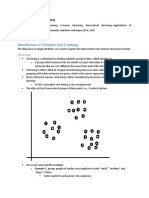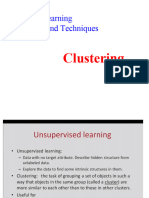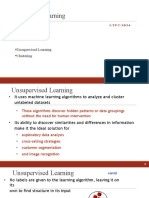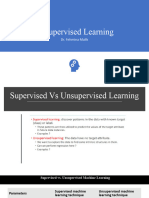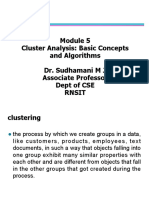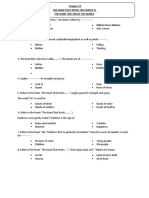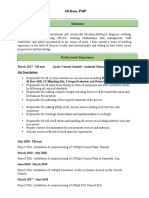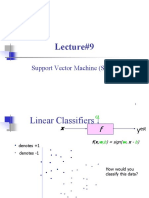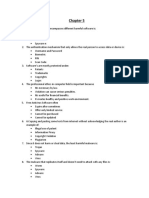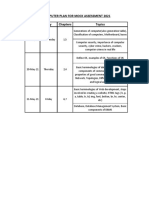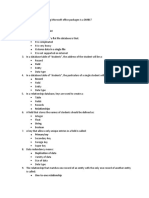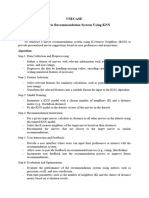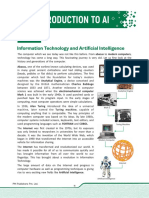0% found this document useful (0 votes)
61 views18 pagesMachine Learning-Lecture#7-Fall 2020
K-means clustering is an unsupervised learning technique that groups unlabeled data points into a specified number of clusters (K) based on feature similarity. It works by assigning data points to the cluster with the closest centroid and iteratively updating centroids until clusters are stable or the maximum number of iterations is reached. While efficient and easy to apply, K-means clustering has limitations such as being sensitive to initialization and not able to handle clusters of varying shapes, sizes, or densities.
Uploaded by
Syed Ali Raza NaqviCopyright
© © All Rights Reserved
We take content rights seriously. If you suspect this is your content, claim it here.
Available Formats
Download as PDF, TXT or read online on Scribd
0% found this document useful (0 votes)
61 views18 pagesMachine Learning-Lecture#7-Fall 2020
K-means clustering is an unsupervised learning technique that groups unlabeled data points into a specified number of clusters (K) based on feature similarity. It works by assigning data points to the cluster with the closest centroid and iteratively updating centroids until clusters are stable or the maximum number of iterations is reached. While efficient and easy to apply, K-means clustering has limitations such as being sensitive to initialization and not able to handle clusters of varying shapes, sizes, or densities.
Uploaded by
Syed Ali Raza NaqviCopyright
© © All Rights Reserved
We take content rights seriously. If you suspect this is your content, claim it here.
Available Formats
Download as PDF, TXT or read online on Scribd
/ 18




